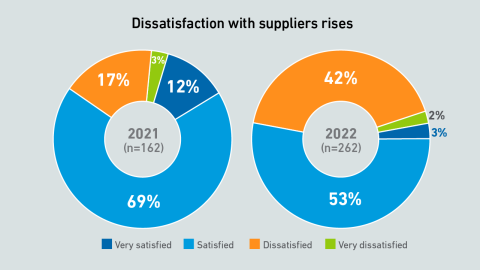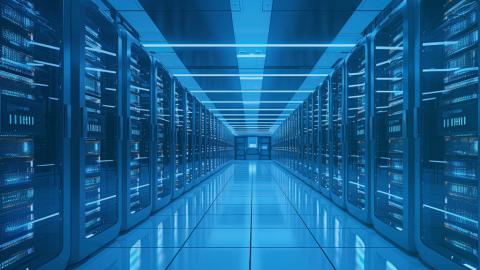There is evidence that outage rates have been gradually falling in recent years. This report brings together and analyzes recent Uptime Institute data on IT and data center outage trends: their causes, costs and consequences.
filters
Explore All Topics
This Q&A brings together contributor / member questions and expert answers resulting from the Uptime Institute Global Data Center Survey 2022. Topics discussed include: IT efficiency, sustainability, outages, supply chain issues and staffing.These…
For the past two years, Uptime has been tracking the progress of what is likely to be the most important legislation yet for data center sustainability and efficiency reporting. The European Energy Efficiency Directive (EED) will affect all but the…
Hyperscale cloud providers have opened numerous operating regions in all corners of the world over the past decade. The three most prominent — Amazon Web Services (AWS), Google Cloud and Microsoft Azure — now have 105 distinct regions (excluding…
This Q&A discusses the issues surrounding the improvement of IT system efficiency, including equipment definitions and efficiency, power management and systems-level software to optimize equipment utilization levels.
Uptime Intelligence finds that operators and vendors face major delays in the supply of equipment, and are increasingly dissatisfied with their suppliers.
Data center operators and IT tenants have traditionally adopted a binary view of cooling performance: it either meets service level commitments, or it does not. The relationship is also coldly transactional: as long as sufficient volumes…
More data center operators are establishing 7x24 goals for clean energy consumption, an approach that is consistent with Uptime Intelligence recommendations on clean energy procurement and goals. This webinar assesses the limits of a 7x24 commitment…
While the politicians argue, stakeholders in the US have been scouring the IRA’s 274 pages for opportunities to capitalize on these lucrative incentives. Some of these will be substantial.
The past decade has seen numerous reports of so-called cloud “repatriations” — the migration of applications back to on-premises venues following negative experiences with, or unsuccessful migrations to, the public cloud.A recent Uptime Update (High…
Data center capacities continued to grow for colocation and enterprise facilities throughout 2022. Operators appear to be more aware of costs as they look to increase server power densities and reduce energy use.
A proposed permanent network of electromagnetic monitoring stations across the continental US, operating in tandem with a machine learning (ML) algorithm, could facilitate accurate predictions of geomagnetic disturbances (GMDs). If realized, this…
Uptime Intelligence uses historical status updates from Amazon Web Services, Google Cloud Platform and Microsoft Azure to calculate the availabilities of several cloud architectures, including a multi-cloud implementation.
Big public-cloud operators have often had to compete against each other — sometimes ferociously. Only rarely have they had to compete against alternative platforms for corporate IT, however. More often than not, chief information officers (CIOs)…
Up until two years ago, the cost of building and operating data centers had been falling reasonably steeply. While labor costs have risen during this time, better management, processes and automation have helped to prevent spiraling wage bills.
 Andy Lawrence
Andy Lawrence
 Lenny Simon
Lenny Simon

 Daniel Bizo
Daniel Bizo

 Jay Dietrich
Jay Dietrich

 Dr. Owen Rogers
Dr. Owen Rogers


 Douglas Donnellan
Douglas Donnellan






 Jacqueline Davis
Jacqueline Davis



 Max Smolaks
Max Smolaks